Opinion & Analysis
Wishon: How to choose the right club head
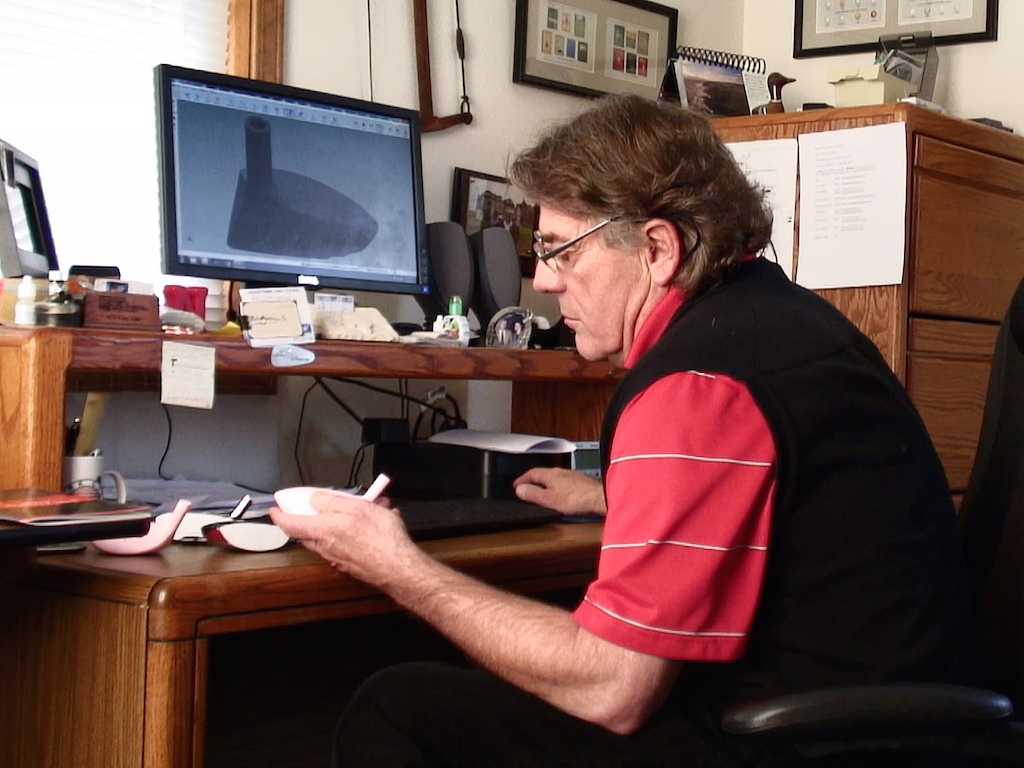
Most golfers have to like the way their clubs look at address, so the psychological side of club head selection is very important. If golfers don’t like the way their new clubs look, the success of the overall fitting can be in jeopardy — regardless of how much improvement there is.
That’s why it’s important to fit golfers into club heads that have the potential to improve their performance (misdirection tendency, overall launch conditions/trajectory, etc.), but also keep the shape and style of the club heads a priority.
Clubhead shape/style elements to identify and match to the golfer’s preference typically involve height and blade length of the head, sole width, topline width, topline slope, leading edge radii, offset/face progression, sole radius/bounce/design, back design, and so on.
But while most of these aspects of the “look” of the head may be judged on an esoteric or qualitative manner, there are most definitely performance-based elements of the head design that have to be a very important part of the fitting of the clubhead. As such, there always has to be a balance in the clubfitter’s recommendation and the golfer’s acceptance of the head model.
That’s why when we teach clubhead model fitting, we begin the process by stressing the following guideline to clubfitters:
- Within all of the clubhead models that satisfy the golfer’s personal preferences for shape features, style, finish and cosmetics, recommend the ones that have the highest MOI and the best off-center hit performance.
- If the golfer also needs the utmost in distance and forgiveness for his ability and game-improvement goals, expand your recommendation to include the ones with the best face design for highest COR and best variable thickness construction.
When it comes to the pure performance side of clubhead fitting, the more experienced clubfitters will also keep these points in mind:
- For golfers with a definite need to reduce a slice or hook, recommend driver, wood and hybrid models that are available in different face angle options or those can be adjusted or bent to achieve the correct face angle to reduce the misdirection tendency.
Center of Gravity (CG) changes — either higher/lower or closer/further back from the face to achieve trajectory, shot shape, spin and shot height fitting goals — certainly can be attempted in the head recommendation. The effect of such CG changes may not bring about as much shot shape improvement as hoped, however, because they are so much affected by individual golfer characteristics of clubhead speed, consistency of the delivery of the head to impact and swing error tendencies.
In other words, don’t expect too much change in shot shape from a CG difference in a clubhead unless you are a more accomplished player with a higher-than-average clubhead speed and a proper impact position.
This does not mean that the clubfitter should ignore the benefits of a lower or more rearward-located CG for golfers with slower swings speed or those who need help keeping the ball in the air. Just don’t expect a big change in doing so.
While the final decision for the clubhead is always in the hands of the golfer, clubfitters should do their best to diplomatically explain the tangible benefits for using a clubhead model with a higher level of game improvement features than the golfer may think they need. Golf is a tough game to begin with and using a clubhead that cannot reduce the negative effects of swing errors is not the wisest decision if the goal is to play to the best of your ability.
What matters, what doesn’t
It usually takes BIG differences in head design technology to bring about small-to-medium differences in shot performance.
- A COR difference of 0.030 or more is significant for distance increase. A difference of 0.010 is not.
- An MOI difference of more than 1000 g-cm2 is significant for improvement on off-center hits. A difference of 600 g-cm2 or less is not.
- A vertical CG difference of more than 5 millimeters is significant for shot height and spin differences. One less than that is not for the vast majority of golfers.
- A face-to-back difference in CG of more than 8 millimeters can be significant for shot height and spin differences, but only for golfers with later-to-very-late releases. A face-to-back difference in CG of 5 millimeters or less is insignificant even for later release players.
- The more radius on the iron sole from face to back, the better the sole design is for EVERY golfer to very slightly help reduce the degree of “fatness” of a slightly fat shot. More face-to-back sole radius is also good for more consistent sole-to-turf interaction with Bermuda-type turf as well as for shots hit from the rough.
Related
- What length should your clubs be?
- What lofts should your clubs be?
- Face angle is crucial for a proper fitting
- The best way to fit lie angle
- How to choose the right club head design
- Tom Wishon’s keys to set makeup
- Getting the right size grip, time after time
- What shaft weight should you play?
- What swing weight should your clubs be?
- What shaft flex should I use?
This story is part of a 10-part series from Tom Wishon on professional club fitting.
- LIKE123
- LEGIT15
- WOW8
- LOL5
- IDHT1
- FLOP10
- OB1
- SHANK8
19th Hole
Vincenzi’s 2024 Wells Fargo Championship betting preview: Tommy Fleetwood ready to finally land maiden PGA Tour title

The PGA Tour season ramps back up this week for another “signature event,” as golf fans look forward to the year’s second major championship next week.
After two weaker-field events in the Zurich Classic and the CJ Cup Byron Nelson, most of the best players in the world will head to historic Quail Hollow for one of the best non-major tournaments of the year.
Last season, Wyndham Clark won the event by four shots.
Quail Hollow is a par-71 measuring 7,521 yards that features Bermudagrass greens. The tree-lined, parkland style course can play quite difficult and features one of the most difficult three-hole stretches in golf known as “The Green Mile,” which makes up holes 16-18: two mammoth par 4s and a 221-yard par 3. All three holes have an average score over par, and water is in play in each of the last five holes on the course.
The field is excellent this week with 68 golfers teeing it up without a cut. All of the golfers who’ve qualified are set to tee it up, with the exception of Scottie Scheffler, who is expecting the birth of his first child.
Past Winners at Quail Hollow
- 2023: Wyndham Clark (-19)
- 2022: Max Homa (-8)
- 2021: Rory McIlroy (-10)
- 2019: Max Homa (-15)
- 2018: Jason Day (-12)
- 2017: Justin Thomas (-8) (PGA Championship)
- 2016: James Hahn (-9)
- 2015: Rory McIlroy (-21)
Key Stats For Quail Hollow
Strokes Gained: Approach
Strokes gained: Approach will be extremely important this week as second shots at Quail Hollow can be very difficult.
Total SG: Approach Over Past 24 Rounds
- Akshay Bhatia (+1.16)
- Tom Hoge (+1.12)
- Corey Conners (+1.01)
- Shane Lowry (+0.93)
- Austin Eckroat (+0.82)
Strokes Gained: Off the Tee
Quail Hollow is a long course on which it is important to play from the fairway. Both distance and accuracy are important, as shorter tee shots will result in approach shots from 200 or more yards. With most of the holes heavily tree lined, errant drives will create some real trouble for the players.
Strokes Gained: Off the Tee Past 24 Rounds:
- Ludvig Aberg (+0.73)
- Rory McIlroy (+0.69)
- Xander Schauffele (+0.62)
- Viktor Hovland (+0.58)
- Chris Kirk (+0.52)
Proximity: 175-200
The 175-200 range is key at Quail Hollow. Players who can hit their long irons well will rise to the top of the leaderboard.
Proximity: 175-200+ over past 24 rounds:
- Cameron Young (28’2″)
- Akshay Bhatia (29’6″)
- Ludvig Aberg (+30’6″)
- Sam Burns (+30’6″)
- Collin Morikawa (+30’9″)
SG: Total on Tom Fazio Designs
Players who thrive on Tom Fazio designs get a bump for me at Quail Hollow this week.
SG: Total on Tom Fazio Designs over past 36 rounds:
- Patrick Cantlay (+2.10)
- Rory McIlroy (+1.95)
- Tommy Fleetwood (+1.68)
- Austin Eckroat (+1.60)
- Will Zalatoris (+1.57)
Strokes Gained: Putting (Bermudagrass)
Strokes Gained: Putting has historically graded out as the most important statistic at Quail Hollow. While it isn’t always predictable, I do want to have it in the model to bump up golfers who prefer to putt on Bermudagrass.
Strokes Gained: Putting (Bermudagrass) Over Past 24 Rounds:
- Taylor Moore (+0.82)
- Nick Dunlap (+.76)
- Wyndham Clark (+.69)
- Emiliano Grillo (+.64)
- Cam Davis (+.61)
Course History
This stat will incorporate players that have played well in the past at Quail Hollow.
Course History over past 36 rounds (per round):
- Rory McIlroy (+2.50)
- Justin Thomas (+1.96)
- Jason Day (+1.92)
- Rickie Fowler (+1.83)
- Viktor Hovland (+1.78)
Wells Fargo Championship Model Rankings
Below, I’ve compiled overall model rankings using a combination of the five key statistical categories previously discussed — SG: Approach (27%), SG: Off the Tee (23%), SG: Total on Fazio designs (12%), Proximity: 175-200 (12%), SG: Putting Bermuda grass (12%), and Course History (14%).
- Wyndham Clark
- Rory McIlroy
- Xander Schauffele
- Shane Lowry
- Hideki Matsuyama
- Viktor Hovland
- Cameron Young
- Austin Eckroat
- Byeong Hun An
- Justin Thomas
2024 Wells Fargo Championship Picks
Tommy Fleetwood +2500 (DraftKings)
I know many out there have Tommy fatigue when it comes to betting, which is completely understandable given his lack of ability to win on the PGA Tour thus far in his career. However, history has shown us that players with Fleetwood’s talent eventually break though, and I believe for Tommy, it’s just a matter of time.
Fleetwood has been excellent on Tom Fazio designs. Over his past 36 rounds, he ranks 3rd in the field in Strokes Gained: Total on Fazio tracks. He’s also been incredibly reliable off the tee this season. He’s gained strokes in the category in eight of his past nine starts, including at The Masters, the PLAYERS and the three “signature events” of the season. Tommy is a golfer built for tougher courses and can grind it out in difficult conditions.
Last year, Fleetwood was the first-round leader at this event, firing a Thursday 65. He finished the event in a tie for 5th place.
For those worried about Fleetwood’s disappointing start his last time out at Harbour Town, he’s bounced back nicely after plenty of poor outings this season. His T7 at the Valero Texas Open was after a MC and T35 in his prior two starts and his win at the Dubai Invitational came after a T47 at the Sentry.
I expect Tommy to bounce back this week and contend at Quail Hollow.
Justin Thomas +3000 (DraftKings)
It’s been a rough couple of years for Justin Thomas, but I don’t believe things are quite as bad as they seem for JT. He got caught in the bad side of the draw at Augusta for last month’s Masters and has gained strokes on approach in seven of his nine starts in 2024.
Thomas may have found something in his most recent start at the RBC Heritage. He finished T5 at a course that he isn’t the best fit for on paper. He also finally got the putter working and ranked 15th in Strokes Gained: Putting for the week.
The two-time PGA champion captured the first of his two major championships at Quail Hollow back in 2017, and some good vibes from the course may be enough to get JT out of his slump.
Thomas hasn’t won an event in just about two years. However, I still believe that will change soon as he’s been one of the most prolific winners throughout his PGA Tour career. Since 2015, he has 15 PGA Tour wins.
Course history is pretty sticky at Quail Hollow, with players who like the course playing well there on a regular basis. In addition to JT’s PGA Championship win in 2017, he went 4-1 at the 2022 Presidents Cup and finished T14 at the event last year despite being in poor form. Thomas can return as one of the top players on the PGA Tour with a win at a “signature event” this week.
Cameron Young +3500 (DraftKings)
For many golf bettors, it’s been frustrating backing Cam Young this season. His talent is undeniable, and one of the best and most consistent performers on the PGA Tour. He just hasn’t broken through with a victory yet. Quail Hollow has been a great place for elite players to get their first victory. Rory McIlroy, Anthony Kim, Rickie Fowler and Wyndham Clark all notched their first PGA Tour win at Quail.
Throughout Cam Young’s career, he has thrived at tougher courses with strong fields. This season, he finished T16 at Riviera and T9 at Augusta National, demonstrating his preference of a tough test. His ability to hit the ball long and straight off the tee make him an ideal fit for Quail Hollow, despite playing pretty poorly his first time out in 2023 (T59). Young should be comfortable playing in the region as he played his college golf at Wake Forest, which is about an hour’s drive from Quail Hollow.
The 26-year-old has played well at Tom Fazio designs in the past and ranks 8th in the field in Strokes Gained: Total on those courses in his last 36 rounds. Perhaps most importantly, this season, Young is the best player on the PGA Tour in terms of proximity from 175-200 in the fairway, which is where a plurality and many crucial shots will come from this week.
Young is an elite talent and Quail Hollow has been kind to players of his ilk who’ve yet to win on Tour.
Byeong Hun An +5000 (FanDuel)
Byeong Hun An missed some opportunities last weekend at the CJ Cup Byron Nelson. He finished T4 and played some outstanding golf, but a couple of missed short putts prevented him from getting to the winning score of -23. Despite not getting the win, it’s hard to view An’s performance as anything other than an overwhelming success. It was An’s fourth top-ten finish of the season.
Last week, An gained 6.5 strokes ball striking, which was 7th in the field. He also ranked 12th for Strokes Gained: Approach and 13th for Strokes Gained: Off the Tee. The South Korean has been hitting the ball so well from tee to green all season long and he now heads to a golf course that should reward his precision.
An’s driver and long irons are absolute weapons. At Quail Hollow, players will see plenty of approach shots from the 175-200 range as well as some from 200+. In his past 24 rounds, Ben ranks 3rd in the field in proximity from 175-200 and 12th in proximity from 200+. Playing in an event that will not end up being a “birdie” fest should help An, who can separate from the field with his strong tee to green play. The putter may not always cooperate but getting to -15 is much easier than getting to -23 for elite ball strikers who tend to struggle on the greens.
Winning a “signature event” feels like a tall task for An this week with so many elite players in the field. However, he’s finished T16 at the Genesis Invitational, T16 at The Masters and T8 at the Arnold Palmer Invitational. The 32-year-old’s game has improved drastically this season and I believe he’s ready to get the biggest win of his career.
- LIKE7
- LEGIT2
- WOW0
- LOL0
- IDHT0
- FLOP0
- OB0
- SHANK0
19th Hole
Vincenzi’s LIV Golf Singapore betting preview: Course specialist ready to thrive once again

After another strong showing in Australia, LIV Golf will head to Sentosa Golf Club in Singapore looking to build off of what was undoubtedly their best event to date.
Sentosa Golf Club sits on the southern tip of Singapore and is one of the most beautiful courses in the world. The course is more than just incredible scenically; it was also rated 55th in Golf Digest’s top-100 courses in 2022-2023 and has been consistently regarded as one of the best courses in Asia. Prior to being part of the LIV rotation, the course hosted the Singapore Open every year since 2005.
Sentosa Golf Club is a par 71 measuring 7,406 yards. The course will require precise ball striking and some length off the tee. It’s possible to go low due to the pristine conditions, but there are also plenty of hazards and difficult spots on the course that can bring double bogey into play in a hurry. The Bermudagrass greens are perfectly manicured, and the course has spent millions on the sub-air system to keep the greens rolling fast. I spoke to Asian Tour player, Travis Smyth, who described the greens as “the best [he’s] ever played.”
Davis Love III, who competed in a Singapore Open in 2019, also gushed over the condition of the golf course.
“I love the greens. They are fabulous,” the 21-time PGA Tour winner said.
Love III also spoke about other aspects of the golf course.
“The greens are great; the fairways are perfect. It is a wonderful course, and it’s tricky off the tee.”
“It’s a long golf course, and you get some long iron shots. It takes somebody hitting it great to hit every green even though they are big.”
As Love III said, the course can be difficult off the tee due to the length of the course and the trouble looming around every corner. It will take a terrific ball striking week to win at Sentosa Golf Club.
In his pre-tournament press conference last season, Phil Mickelson echoed many of the same sentiments.
“To play Sentosa effectively, you’re going to have a lot of shots from 160 to 210, a lot of full 6-, 7-, 8-iron shots, and you need to hit those really well and you need to drive the ball well.”
Golfers who excel from tee to green and can dial in their longer irons will have a massive advantage this week.
Stat Leaders at LIV Golf Adelaide:
Fairways Hit
1.) Louis Oosthuizen
2.) Anirban Lahiri
3.) Jon Rahm
4.) Brendan Steele
5.) Cameron Tringale
Greens in Regulation
1.) Brooks Koepka
2.) Brendan Steele
3.) Dean Burmester
4.) Cameron Tringale
5.) Anirban Lahiri
Birdies Made
1.) Brendan Steele
2.) Dean Burmester
3.) Thomas Pieters
4.) Patrick Reed
5.) Carlos Ortiz
LIV Golf Individual Standings:
1.) Joaquin Niemann
2.) Jon Rahm
3.) Dean Burmester
4.) Louis Oosthuizen
5.) Abraham Ancer
LIV Golf Team Standings:
1.) Crushers
2.) Legion XIII
3.) Torque
4.) Stinger GC
5.) Ripper GC
LIV Golf Singapore Picks
Sergio Garcia +3000 (DraftKings)
Sergio Garcia is no stranger to Sentosa Golf Club. The Spaniard won the Singapore Open in 2018 by five strokes and lost in a playoff at LIV Singapore last year to scorching hot Talor Gooch. Looking at the course setup, it’s no surprise that a player like Sergio has played incredible golf here. He’s long off the tee and is one of the better long iron players in the world when he’s in form. Garcia is also statistically a much better putter on Bermudagrass than he is on other putting surfaces. He’s putt extremely well on Sentosa’s incredibly pure green complexes.
This season, Garcia has two runner-up finishes, both of them being playoff losses. Both El Camaleon and Doral are courses he’s had success at in his career. The Spaniard is a player who plays well at his tracks, and Sentosa is one of them. I believe Sergio will get himself in the mix this week. Hopefully the third time is a charm in Singapore.
Paul Casey +3300 (FanDuel)
Paul Casey is in the midst of one of his best seasons in the five years or so. The results recently have been up and down, but he’s shown that when he’s on a golf course that suits his game, he’s amongst the contenders.
This season, Casey has finishes of T5 (LIV Las Vegas), T2 (LIV Hong Kong), and a 6th at the Singapore Classic on the DP World Tour. At his best, the Englishman is one of the best long iron players in the world, which makes him a strong fit for Sentosa. Despite being in poor form last season, he was able to fire a Sunday 63, which shows he can low here at the course.
It’s been three years since Casey has won a tournament (Omega Dubai Desert Classic in 2021), but he’s been one of the top players on LIV this season and I think he can get it done at some point this season.
Mito Pereira +5000 (Bet365)
Since Mito Pereira’s unfortunate demise at the 2022 PGA Championship, he’s been extremely inconsistent. However, over the past few months, the Chilean has played well on the International Series as well as his most recent LIV start. Mito finished 8th at LIV Adelaide, which was his best LIV finish this season.
Last year, Pereira finished 5th at LIV Singapore, shooting fantastic rounds of 67-66-66. It makes sense why Mito would like Sentosa, as preeminent ball strikers tend to rise to the challenge of the golf course. He’s a great long iron player who is long and straight off the tee.
Mito has some experience playing in Asia and is one of the most talented players on LIV who’s yet to get in the winner’s circle. I have questions about whether or not he can come through once in contention, but if he gets there, I’m happy to roll the dice.
Andy Ogletree +15000 (DraftKings)
Andy Ogletree is a player I expected to have a strong 2024 but struggled early in his first full season on LIV. After failing to crack the top-25 in any LIV event this year, the former U.S. Amateur champion finally figured things out, finished in a tie for 3rd at LIV Adelaide.
Ogletree should be incredible comfortable playing in Singapore. He won the International Series Qatar last year and finished T3 at the International Series Singapore. The 26-year-old was arguably the best player on the Asian Tour in 2023 and has been fantastic in the continent over the past 18 months.
If Ogletree has indeed found form, he looks to be an amazing value at triple-digit odds.
- LIKE3
- LEGIT3
- WOW1
- LOL2
- IDHT0
- FLOP2
- OB0
- SHANK0
Opinion & Analysis
Ryan: Lessons from the worst golf instructor in America

In Tampa, there is a golf course that boasts carts that do not work, a water range, and a group of players none of which have any chance to break 80. The course is overseen by a staff of crusty men who have succeeded at nothing in life but ending up at the worst-run course in America. However, this place is no failure. With several other local courses going out of business — and boasting outstanding greens — the place is booked full.
While I came for the great greens, I stayed to watch our resident instructor; a poor-tempered, method teacher who caters to the hopeless. At first, it was simply hilarious. However, after months of listening and watching, something clicked. I realized I had a front-row seat to the worst golf instructor in America.
Here are some of my key takeaways.
Method Teacher
It is widely accepted that there are three types of golf instructors: system teachers, non-system teachers, and method teachers. Method teachers prescribe the same antidote for each student based on a preamble which teachers can learn in a couple day certification.
Method teaching allows anyone to be certified. This process caters to the lowest caliber instructor, creating the illusion of competency. This empowers these underqualified instructors with the moniker of “certified” to prey on the innocent and uninformed.
The Cult of Stack and Jilt
The Stack and Tilt website proudly boasts, “A golfer swings his hands inward in the backswing as opposed to straight back to 1) create power, similar to a field goal kicker moving his leg in an arc and 2) to promote a swing that is in-to-out, which produces a draw (and eliminates a slice).”
Now, let me tell you something, there is this law of the universe which says “energy can either be created or destroyed,” so either these guys are defying physics or they have no idea what they are taking about. Further, the idea that the first move of the backswing determines impact is conjecture with a splash of utter fantasy.
These are the pontifications of a method — a set of prescriptions applied to everyone with the hope of some success through the placebo effect. It is one thing for a naive student to believe, for a golf instructor to drink and then dispel this Kool-Aid is malpractice.
Fooled by Randomness
In flipping a coin, or even a March Madness bet, there is a 50-50 chance of success. In golf, especially for new players, results are asymmetric. Simply put: Anything can happen. The problem is that when bad instructors work with high handicappers, each and every shot gets its own diagnosis and prescription. Soon the student is overwhelmed.
Now here’s the sinister thing: The overwhelming information is by design. In this case, the coach is not trying to make you better, they are trying to make you reliant on them for information. A quasi Stockholm syndrome of codependency.
Practice
One of the most important scientists of the 20th century was Ivan Pavlov. As you might recall, he found that animals, including humans, could be conditioned into biological responses. In golf, the idea of practice has made millions of hackers salivate that they are one lesson or practice session from “the secret.”
Sunk Cost
The idea for the worst golf instructor is to create control and dependency so that clients ignore the sunk cost of not getting better. Instead, they are held hostage by the idea that they are one lesson or tip away from unlocking their potential.
Cliches
Cliches have the effect of terminating thoughts. However, they are the weapon of choice for this instructor. Add some hyperbole and students actually get no information. As a result, these players couldn’t play golf. When they did, they had no real scheme. With no idea what they are doing, they would descend into a spiral of no idea what to do, bad results, lower confidence, and running back to the lesson tee from more cliches.
The fact is that poor instruction is about conditioning players to become reliant members of your cult. To take away autonomy. To use practice as a form of control. To sell more golf lessons not by making people better but through the guise that without the teacher, the student can never reach their full potential. All under the umbrella of being “certified” (in a 2-day course!) and a melee of cliches.
This of course is not just happening at my muni but is a systemic problem around the country and around the world, the consequences of which are giving people a great reason to stop playing golf. But hey, at least it’s selling a lot of golf balls…
- LIKE19
- LEGIT2
- WOW0
- LOL4
- IDHT1
- FLOP4
- OB1
- SHANK25
-

 19th Hole2 weeks ago
19th Hole2 weeks agoJustin Thomas on the equipment choice of Scottie Scheffler that he thinks is ‘weird’
-

 19th Hole2 weeks ago
19th Hole2 weeks ago‘Absolutely crazy’ – Major champ lays into Patrick Cantlay over his decision on final hole of RBC Heritage
-

 19th Hole3 weeks ago
19th Hole3 weeks agoBrandel Chamblee has ‘no doubt’ who started the McIlroy/LIV rumor and why
-

 19th Hole2 weeks ago
19th Hole2 weeks agoLET pro gives detailed financial breakdown of first week on tour…and the net result may shock you
-

 19th Hole7 days ago
19th Hole7 days agoGary Player claims this is what ‘completely ruined’ Tiger Woods’ career
-

 19th Hole14 hours ago
19th Hole14 hours agoReport: LIV star turns down PGA Championship invite due to ‘personal commitments’
-

 Whats in the Bag1 week ago
Whats in the Bag1 week agoTeam McIlowry (Rory McIlroy, Shane Lowry) winning WITBs: 2024 Zurich Classic
-

 19th Hole3 weeks ago
19th Hole3 weeks agoTaylorMade signs 15-year-old AJGA Rolex Junior Player of the Year to an NIL contract

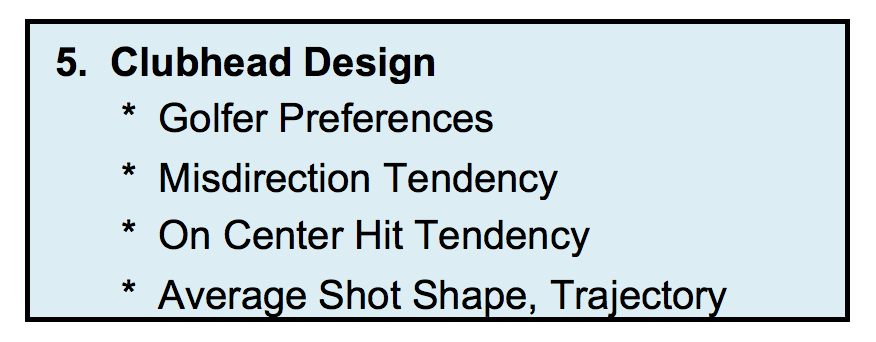
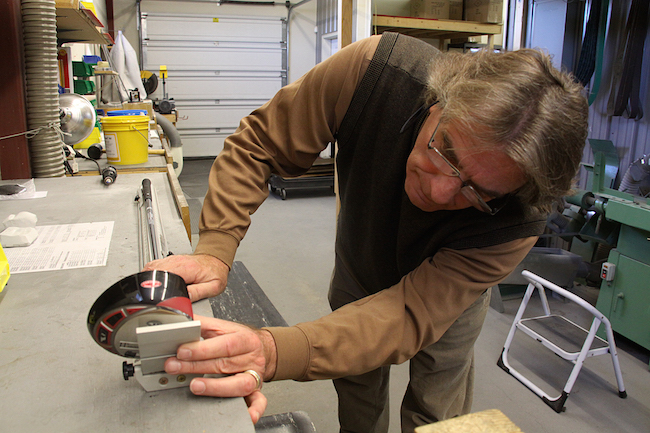



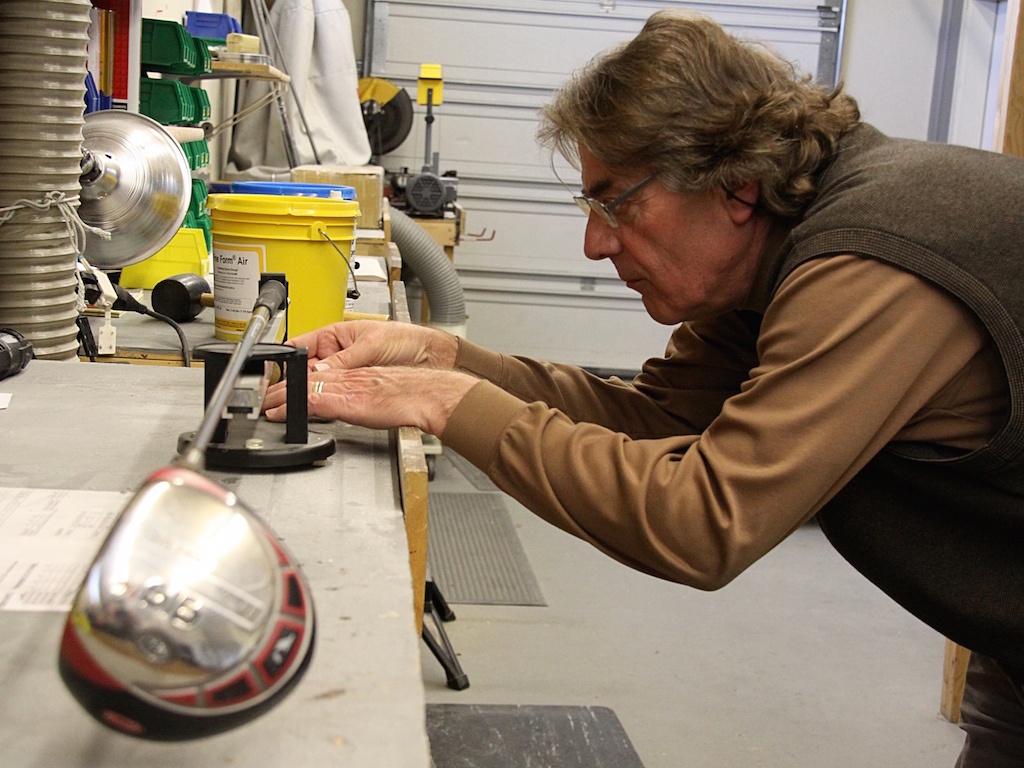

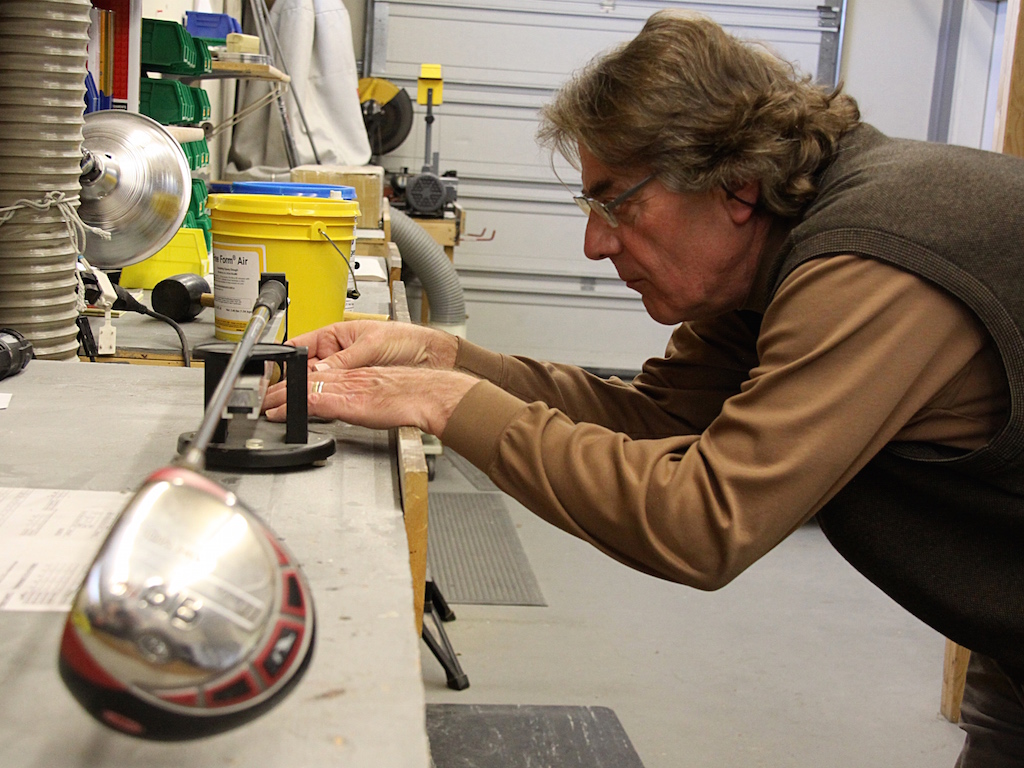
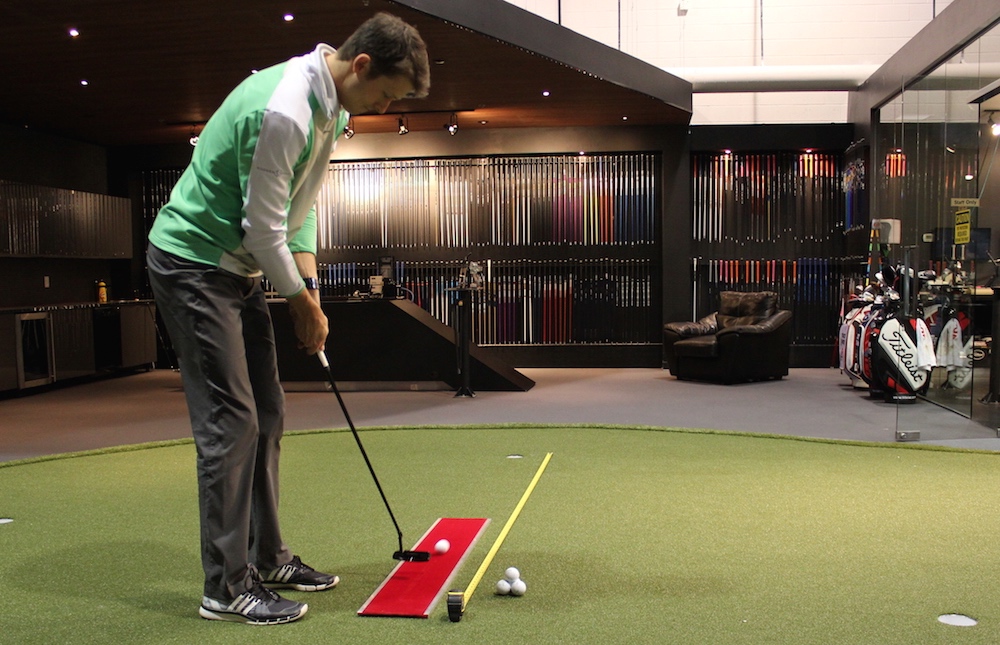
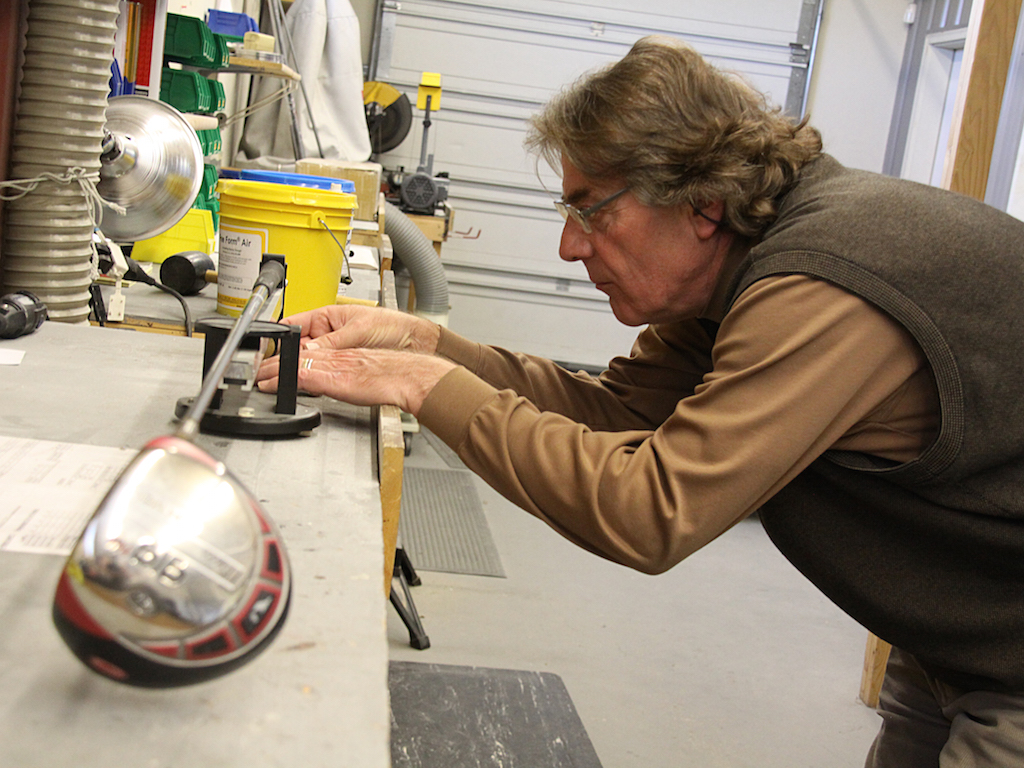








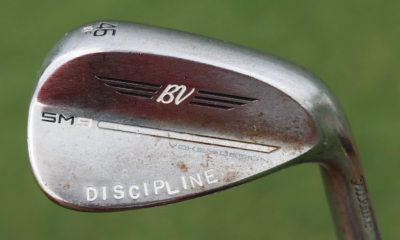







dime bag
Feb 4, 2015 at 8:43 pm
When my 4 year gets crabby we put him in a special chair called the “pouty place”. Does Keith need to sit in the “pouty place” for a while until he can act like a big guy?
Keith
Feb 4, 2015 at 9:11 pm
Yes, I think I do…but I just had a Snickers bar so I think I am better now.
JOEL GOODMAN
Feb 4, 2015 at 8:32 pm
why the negativity from these guys? If you don’t like it , go away. Tom Wishon has forgotten more about golf clubs than 99% of people will ever learn. He is pure genius and is worth listening to and reading his views. WRX is a superb vehicle for information not available through the “how to cure your slice”media. I love it and think Tom Wishon is terrific. Disclosure-I have purchased and built clubs using Wishon components and am using one of his drivers. I also play Mizuno MP68 irons, and wedges. I live in south Florida, age 79 index 7.7 and play 5 days every week, 52 weeks a year–JEALOUS?????
chris
Feb 4, 2015 at 8:56 pm
I could agree more, being new to this site I have found Tom’s articles to be the most informative that I have read here. Keep up the good work Tom.
Keith
Feb 4, 2015 at 9:13 pm
Yes, I am jealous…and…Yes, I agree Mr. Wishon is a genius and makes a great product.
Benny
Feb 4, 2015 at 7:12 pm
Awesome stuff Tom, makes complete sense. I have a couple friends of mine who bought Wishon that were properly fitted and while very high handicappers their games have really improved and feel it’s from proper fitting. Most amateur golfers are very steep in their swings. They stand very up right and close to the ball so the angle is steep and adding the radius helps them. Add this to your adjustable hozels on your woods/drivers and you really have the best fitted clubs money can buy. Never mind priced way below most manufactures. You just cannot beat it and I am extremely excited to be getting my woods from one of your builders this spring.
Please keep this info coming because even the negative talk on here is helping get your points across. Thanks Tom, thanks WRX!
Bob
Feb 4, 2015 at 12:22 pm
Is he saying the wider the sole the better it is for all players.
Shallowface
Feb 4, 2015 at 3:50 pm
You can certainly have face to back radius or camber in a narrow sole, so I don’t think Tom was saying that the sole has to be wide.
Tom Wishon
Feb 4, 2015 at 5:41 pm
shallowface
Not sole width – I was talking about the sole radius in the direction from front to back across the sole being good for all players. Add a rounding of the leading edge from sole around to face and that is better for everyone too. Such sole designs stand up better for those with more downward angle of attack into the ball, and they can help slightly for shots from the rough because the greater front to back sole radius offers less surface contact to the grass for a little less chance of the sole hanging up in the rough.
myron miller
Feb 4, 2015 at 12:08 pm
Tom, I notice you don’t talk about CT time for any of the clubs, especially the driver as being important. Is it because you don’t feel its a factor or what?
I’m asking because at least one driver manufacturer tries to emphasis its higher CT time as being critical to improving distance. Personally I don’t see how CT time on the face makes that much difference especially considering all the differences in golf ball hardness.
Tom Wishon
Feb 4, 2015 at 6:01 pm
Myron
In the article I did say this. . .
Within all of the clubhead models that satisfy the golfer’s personal preferences for shape features, style, finish and cosmetics, recommend the ones that have the highest MOI and the best off-center hit performance.
If the golfer also needs the utmost in distance and forgiveness for his ability and game-improvement goals, expand your recommendation to include the ones with the best face design for highest COR and best variable thickness construction.
Thus the comment about highest COR as a part of a clubhead recommendation for a golfer who needs/wants the utmost in distance. CT/COR is a non issue with drivers and has been for a long time because virtually every titanium driver made since the late 90s has been maximized for COR to be as close to the limit as the company’s production of the head will allow under normal +/- tolerances. Of course if the golfer wants to eek out the absolute most in driver COR, he can hit several models and look for the one that records a smash factor of 1.49-1.50 which is the max possible for an 0.830 COR/257 CT face measurement.
CT is just a different form of test to enable the USGA to assess the ability of the face to flex inward at impact more quickly than it takes to run an actual air cannon COR test. With driver heads, CT is correlatable to an actual COR test measurement. It is not in irons. So the reason CT is pertinent to distance is because the more you get the face to flex at impact without deforming, the less energy is lost in the collision between the face and the ball. That right there is the basic science behind COR. From this comes the higher ball speed in relation to the clubhead speed – aka smash factor. So if you have a driver with a CT of say, 260 and one at 240, without question the ball speed in relation to clubhead speed for the 260CT will be higher than the one at 240, and from this will come more distance if the loft and everything else is fit correctly to the golfer.
Let me explain how this works with respect to different ball compression types and ball construction. With a low COR head, in the collision between the face and the ball, 80% of the energy loss from the impact comes from the compression of the ball against the face. Squash the ball more, you lose more energy. 20% comes from the face flexing inward only a tiny bit as a low COR head. If you allow the face to flex inward more, what you do is you greatly reduce the amount that the ball squashes against the face. So the ball’s energy loss is much less than the increase in energy loss from the face flexing inward a little more.
To grasp this, realize that the face of an 0.830 COR driver flexes inward just short of 1/16″ at impact. The face of a low COR (0.780) driver flexes inward a little less than 1/32″. So just for an additional 1/32″ of face flexing, the energy transfer is much greater due to a lot less squashing of the ball so the ball speed can increase quite a bit in relation to the clubhead speed.
With a soft ball like a Noodle, with a low COR head, that ball at 100mph clubhead speed will squash around 30% of its diameter. Change to a high COR head and that same ball now squashes around 20% of its diameter, thus reducing the energy loss and increasing the energy transfer to the shot to get more ball speed. With a hard solid ball, with a low COR head, that ball at 100mph clubhead speed will squash around 20% of its diameter. Change to a high COR head and that same ball now squashes around 12% of its diameter, thus reducing the energy loss and increasing the energy transfer to the shot to get more ball speed.
So the high COR face design works to increase ball speed and distance no matter what the ball construction.
chris
Feb 4, 2015 at 8:33 pm
That was a very informative reply for those of us who don’t have a strong grasp of what happens to the and the club face at impact.
Keith
Feb 4, 2015 at 11:38 am
I am slightly confused by these articles…are these just long advertorials as a point of differentiation from other manufacturers? It seems like a conflict of interest to have a manufacturer of golf clubs writing articles for your site without slugging this as an advertisement…especially if you drive to his site at the bottom of the page.
You may not be explicitly selling his product, by you are advertising his process and have alluded to others not being as thorough in previous articles. Being part of the Conde Nast family you would think your editors would know this is not okay….but alas you will probably delete this comment and continue as usual.
Zak Kozuchowski
Feb 4, 2015 at 11:46 am
Keith,
First off, GolfWRX is independently owned and operated — not part of the Conde Nast family or affiliated with Conde Nast in any way.
Secondly, this is not an advertisement. Tom Wishon is a GolfWRX Contributor and part of our Featured Writers program. We’re working with him on this series because we think he can help our readers better understand club fitting and their club fitting needs. He does not pay us to publish this stories.
Last, we only delete comments that are wildly off topic, use inappropriate language or personally attack or authors. If you’ve had a comment deleted, that’s why.
– Zak Kozuchowski
GolfWRX Managing Editor
Shallowface
Feb 4, 2015 at 12:05 pm
I consider myself to be highly sensitive to the things Keith mentions, and I consider Tom’s articles to be just fine. Anything that helps us be more educated consumers is most welcome, and from a lot of what I read here is sorely needed.
Looking forward to the rest of the series!
Keith
Feb 4, 2015 at 3:18 pm
I appreciate the response, but respectfully disagree with what you have said here. This is absolutely an advertisement and your readers should know that. You are driving to his company site in which his whole sales pitch is custom fitting. I find it hard to believe that site traffic and conversion (lead) is not being tracked on wishongolf.com from GolfWrx.com.
I don’t have an issue with the article and agree it may be helpful…but it is without a doubt advertising.
Also, does your partnership with Golf Digest for content production and distribution not count as being affiliated with Conde Nast? Perhaps we are forgetting about this comment
“Joining forces with an established and authoritative brand such as the Golf Digest Properties will resonate with the passionate community we’ve cultivated with GolfWrx,” said Richard Audi, president of GolfWrx. “We welcome the contributions of its editors and look forward to creating innovative new offerings for advertisers in the conversational web.”
Zak Kozuchowski
Feb 4, 2015 at 3:38 pm
Keith,
GolfWRX is no longer associated with Golf Digest, and has and always has been independently owned and operated.
We have and will continue to have contributors write for us about things we consider to be valuable to our readers.
Let’s not muck up this comments section with unrelated comments any further.
Keith
Feb 4, 2015 at 3:43 pm
Zak…come on..really…no longer affiliated? I will let it go because I am a fan of the site, that is fine.
Steven
Feb 4, 2015 at 2:41 pm
Where the f@#$ did you get the idea WRX was part of Conde Nast?
And who the f@#$ still uses the term ‘but alas’?
Since you don’t know, WRX was started and still run by a few guys in Detroit, with a handful of very involved contributors across the country.
https://www.youtube.com/watch?v=lBIt-p5ruBM
Keith
Feb 4, 2015 at 3:46 pm
Hahahaha thank you for sharing that link, one of my favorite episodes and I 100% agree. You seem like a real stand up guy Steven!